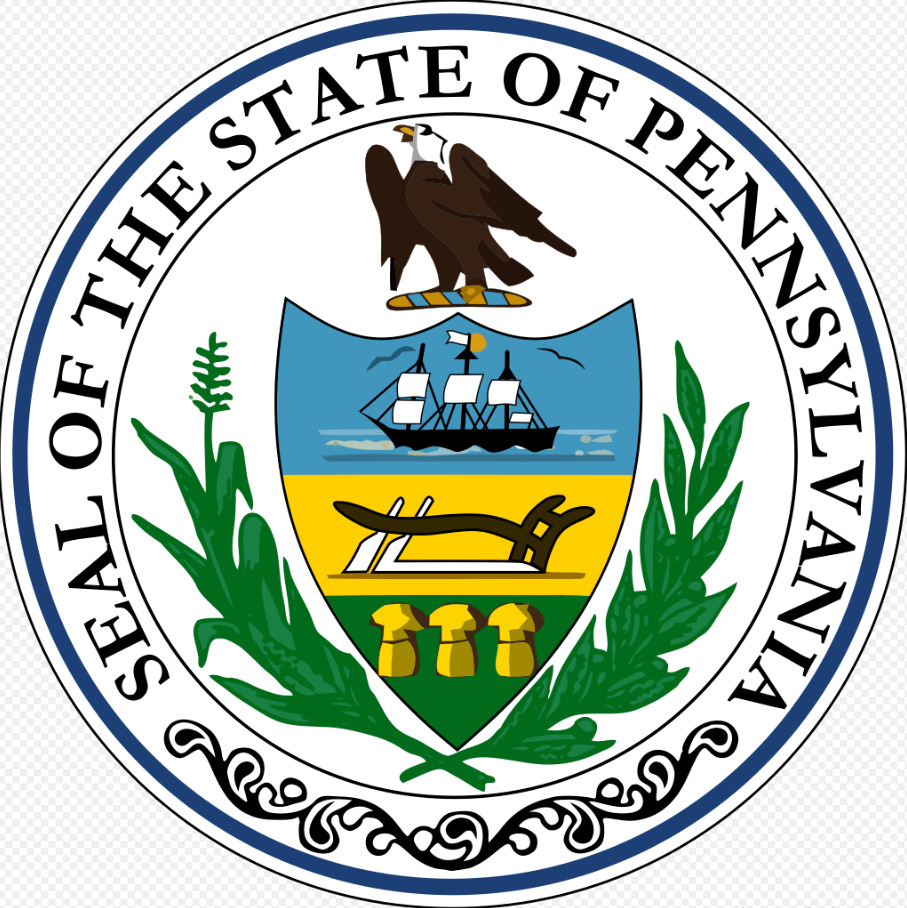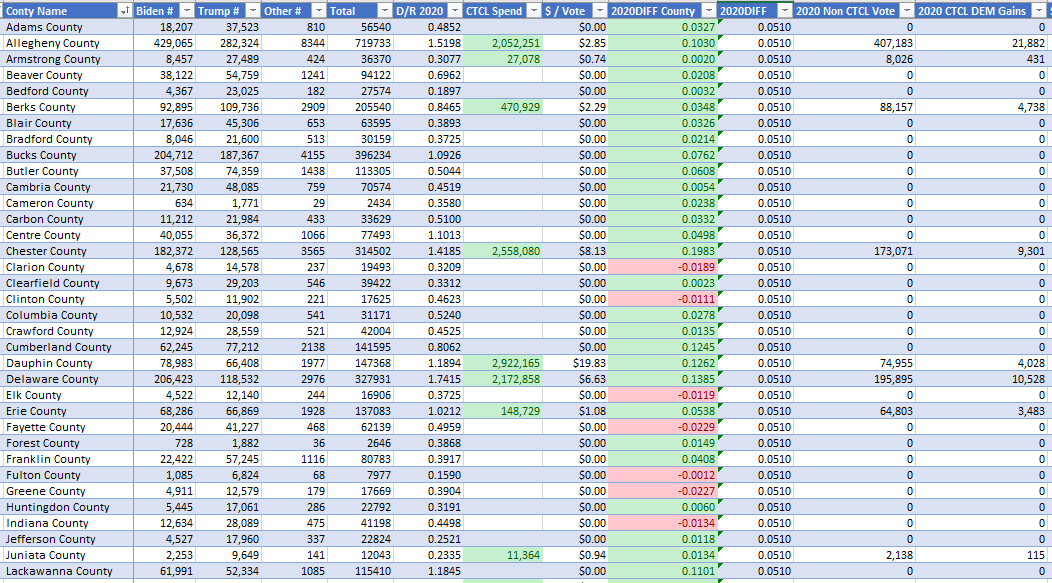Introduction
Question: Is CTCL misrepresenting the information on the IRS Form 990 stating that the PURPOSE of the grants were to help support the SAFE administration of public elections during the Covid-19 pandemic?
Answer: It appears so given the results of both aggregate, state and county by county analysis as we will see below. It appears this is a quantifiable democrat ballot harvesting operation.
Background
This is Part V in The NGO Project series which examines the role NGOs had in determinative outcomes in the 2020 Presidential Election. In prior articles, I focused on the effect CTCL had on AZ, CO, GA, MI, NM, UT, and WI.
This article will solely focus on CTCL in Pennsylvania (PA).
Calculation Basis
The calculation basis was previously explained in detail here. In this article, I do make one adjustment and that is to calculate the 2020DIFF factor by weighted average rather than arithmetic average.
Analysis
Of the 67 PA counties, 20 (30%) are classified as CTCL Counties because grants were made in the county. PA is the first state I have so far where a grant was made directly to the state government in Harrisburg as listed below. Might be interesting to FOIA what was done at the state level with these funds?
Total votes cast in CTCL Counties were ~ 4,200,000 (61%) and NonCTCL Counties were ~ 2,715,000 (39%). To state it a different way, on a per County basis, CTCL had the opportunity to influence 61% of PA voters.
The total amount of grants to PA was ~ $24,000,000 and the value of individual grants ranged from $11,500 to $10,500,000. As seen above, the state received 2.44MM directly from CTCL.
This table includes the CTCL counties. This table is summed at the county entity level.
20.2MM of the grants (85%) were focused in the 5 counties of Philadelphia, Allegheny, Chester, Dauphin and Delaware. Not surprisingly (perhaps) is that the top counites in terms of $/vote spent by CTCL (all parties) corresponds to the same counties and ranges from $2.29/vote to $19.83/vote (all parties).
The average 2016 D/R ratio for CTCL Counties was 1.00 (not weighted). The average 2016 D/R ratio for NonCTCL Counties was 0.48 (not weighted). This indicates a bias in who received CTCL grants in 2020 towards D counties.
However, the top 5 counties in terms grants had a hopping average 2016 D/R ratio of 2.14!! As one might expect, the top 5 counties which voted heavy D in 2016 received 85% of the grants. Need I say more? (Yes I will).
How does this fact alone confirm or disapprove my thesis that the grants were NOT used for public safety?
Finally, I will note above one curious item.
Even given the 10.5MM CTCL grant to Philadelphia, the county still trended more R in the ratio of D/R between 2016 and 2020. In 2016, Philadelphia County had an astonishing D/R of 5.37 and in 2020 that “dropped” to D/R of 4.55. Thus a 2020DIFF of -0.8218. (4.55 is 2x more than any other county I have looked at in any state.)
Let’s dig into what this means, in the context of this analysis.
2020DIFF Calculated with Weighted Average
For this analysis, I used a slightly different way to calculate the 2020DIFF using a weighted average based on total votes in a county. This is what it looks like.
w = Total County Vote / Total State Vote
a = D/R2020 - D/R2016 (for CTCL Counties)
a' = a * w (per county)
2020DIFF = sum(a'1:a'n)
This method in theory permits a better correlation for D vote harvesting because it is weighted for counties with higher vote totals.
First, the 2020 DIFF value for NonCTCL counties was effectively 0% meaning there was no change in the D/R ratio between 2016 and 2020. This is interesting, where CTCL choose NOT to grant money, people voted on average in the same D/R ratios as in 2016!! It’s just math folks, check it yourself. Please don’t believe me.
Secondly, if we exclude Philadelphia, the 2020DIFF value is 5.1%. This means in theory, CTCL “harvested” 5.1% more D votes (using a weighted average) in CTCL counties. This analysis precludes using -2020DIFF values to increase D votes so, I will have to leave the D vote harvesting machine of Philadelphia out of the rest of the calculations.
The question becomes, without Philadelphia, was there still enough harvesting to flip PA in favor of Biden? Let’s see….
The other counties (excluding Philadelphia) that had a -2020DIFF value were ALL NonCTCL counties. There were 10 of these. These counties trended R in the D/R ratio in 2020. This further proves my point that when CTCL is not involved, people voted more R in 2020.
What does all of this mean in terms of D vote harvesting?
When added up, ~ 92,000 D votes were contributed from CTCL Counties in PA due to the presence of the grants based on a 5.1% harvesting ratio. 48,000 (52%) of those came from the 3 counties of Allegheny, Delaware and Montgomery (again, this excludes Philadelphia).
The difference between Biden (3,485,229 votes) and Trump (3,377,674 votes) in PA was 107,555 votes. With a calculated CTCL contribution of 92,000 D votes (excluding Philadelphia the D machine), this brings the difference to just ~ 15,000 more D votes.
Once can easily surmise that if you throw in the Philadelphia D machine into the mix, this easily puts Biden over the top.
Conclusion
CTCL issued ~$24,000,000 grants in PA and “purchased” ~ 92,000 more D votes in CTCL counties (excluding Philadelphia) than would have occurred without CTCL grants.
That is ~ $260/Vote (excluding Philadelphia).
Pretty good return on your investment if you are part of the election racketeering cabal.
References
Telegram - https://t.me/electiondataanalyzer
Truth - @ElectionDataAnalyzer









Great Analysis! Thank you so much for your work!